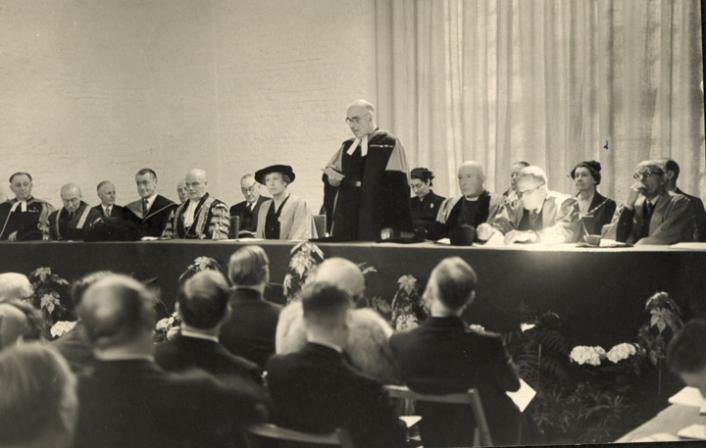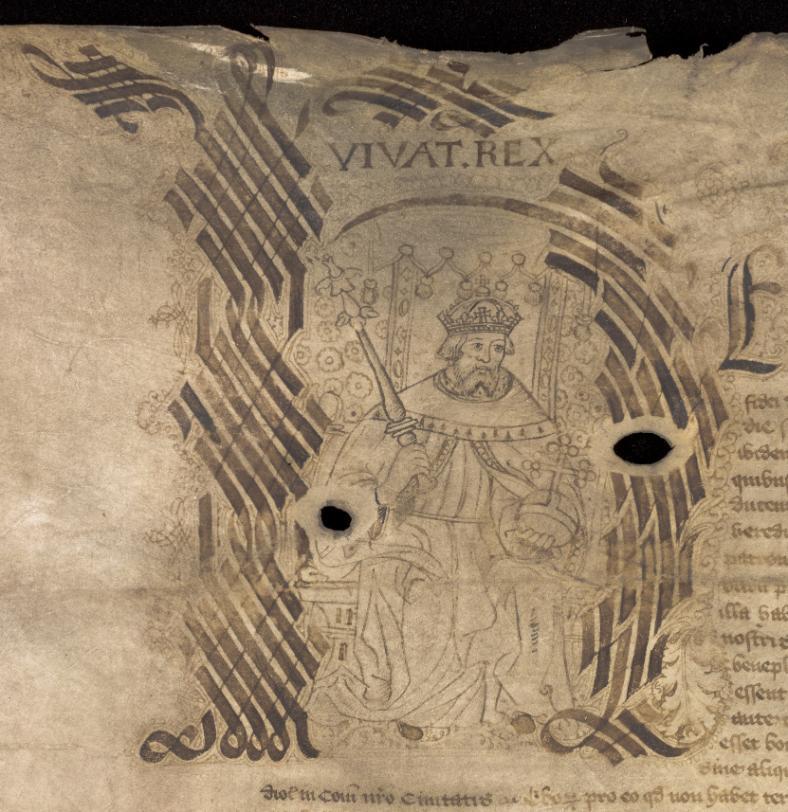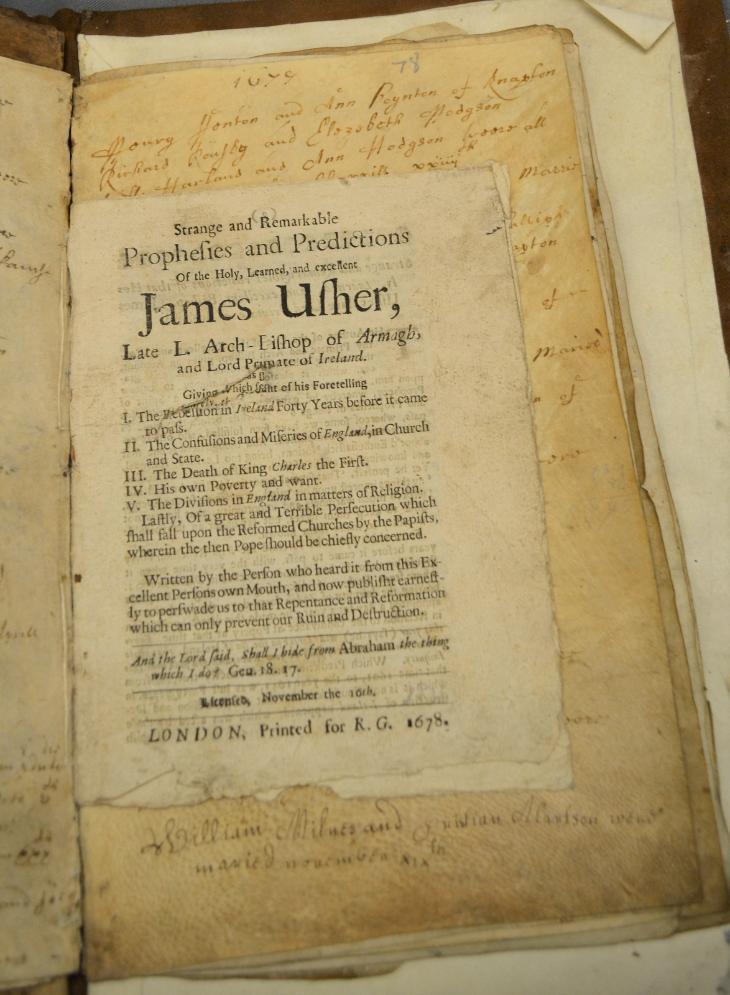Borthwick Newsletter - June 2023
Posted on 31 May 2023
June in the Archives - delve into our catalogues with this month’s featured description
Programme for the June 1967 University of York Summer Ball, which featured Humphrey Lyttleton, Georgie Fame, Kiki Dee, and The Spinners. [University of York Archive, UOY/PP/6/3/2]
What’s new?
After the warm weather over the final May Bank Holiday weekend, it feels like summer might finally be on its way. This past month the Borthwick has passed a very important milestone. On the 15th May 2023 it was exactly seventy years since our official opening. The Borthwick Institute of Historical Research (as it was then known) was formally opened by Princess Mary, the Princess Royal, in 1953. The Princess had married Viscount Lascelles of Harewood House, near Leeds, and today our collections include the substantial opera recordings collected by her son, George, 7th Earl of Harewood, as part of the Music Preserved Archive. In fact the guest list for the opening includes a whole host of names which feature in our collections. Eric Milner White, Dean of York, whose collection of 20th century detective fiction can be found in Rare Books; John Bowes Morrell, one time Lord Mayor of York and a Director of Rowntrees, whose records can be found across our Rowntree company, trust, and family archives; and of course the Archbishop of York, who provided us with our first Director, Canon Purvis, and our first (and largest) archive, that of the Diocese of York.

The creation of the Borthwick marked a major step forward in the campaign to found a university in York and its success is marked by not one, but two anniversary years. Just as the Borthwick celebrates its seventieth birthday, so the University of York celebrates sixty years since its foundation, just ten years later, in April 1963. You can read more about the history of the Borthwick on our website.
New Accessions
Number of archival descriptions on Borthcat on 1st June 2023: 123,570
We added a number of new additions to existing archives in May. The British Music Society of York, founded in 1921 as a regional branch of the national Society, received three new additions, including general administrative records and a number of concert programmes dating back to the Second World War. We also added family photographs and a recipe for ‘skeletonising leaves’ to the archive of 19th century gardener James Hornby, and a new baptism register to the parish records of Ledsham. Records received from the family of Reverend G.W. Thompson have bolstered at least two of our parish archives, including as they do papers relating to Wintringham and Thorpe Bassett parishes, as well as records relating to the reverend’s work as Rural Dean of Buckrose, covering as a whole 1877-1966. The list of records takes in the whole of Reverend Thompson’s church career and more, with a rather intriguing mention of some school reports and ‘a sketch of a man losing a shoe’!
Cataloguing
We made a number of updates to existing archive catalogues in May, among them the British Music Society of York, the University of York, and the archive of gardener James Hornby. We’ve also added full catalogues for two more of our parish archives: Wintringham and Scrayingham. Wintringham is the older collection of the two, dating back to 1558, the year of the accession of Queen Elizabeth I. The earliest parish register has a fascinating little addition in the form of a pamphlet of the ‘strange and remarkable prophesies and predictions’ of Archbishop Usher, dated 1678.
Usher was the Archbishop of Armagh until his death in 1656 and according to the pamphlet he foresaw the death of King Charles I, the rebellion in Ireland, and ‘the divisions in England in matters of Religion.’ During his lifetime Usher also published a complete chronology of the world, calculated using a literal reading of the Old Testament and dating the creation of the world to the 22nd October, 4004 BC. We have no way of knowing how the pamphlet came to be in the parish register, but we can perhaps imagine it being tucked inside for posterity by an interested clergyman in the late seventeenth century, ready for us to find all these centuries later.
Borthwick Out and About
It’s been a busy month for us onsite and online. Access and Engagement Archivist Laura Yeoman contributed to the university history department’s symposium on LGTBQ+ histories, along with Fedor Topolev-Soldunov who, last year, undertook a funded internship to update and expand our LGTBQ+ research guide. We also welcomed some young budding historians to the Borthwick, in the form of Year Six pupils from two local primary schools who took part in ‘Primary Detective’ days, getting to see original documents from the medieval to the modern era. We hope they will be the first young visitors of many!
Our Borthwick Blog has been updated twice in May, both times by guest contributors. Last term, MA student Izzy took part in a public history project at the Borthwick looking at the long running student newspaper ‘Nouse’ and how it reported on university and national events over the sixty year history of the University of York. Izzy has written about her experience working with the archive and creating online content for it here. And speaking of national events, our second guest contributor, Helen Watt took the coronation of King Charles III as an opportunity to investigate an intriguing set of entries in the fourteenth century register of Alexander Neville, Archbishop of York, which includes the order of service for the coronation of a King. The entries have come to light as part of our ongoing project to index the unique series of Archbishops’ Registers kept here at the Borthwick. You can read Helen’s blog here, or find out more about the Archbishops’ Registers project on the website.
Finally, you can expect to see more of us in June as the annual York Festival of Ideas kicks off once again. Collections Information Archivist, Sally-Anne Shearn, will be discussing city benefactor John Bowes Morrell’s short lived dream for a York Folk Park, drawing on the newly catalogued archive of the Joseph Rowntree Reform Trust. Our Keeper of Archives Gary Brannan will be chairing a screening and Q&A on the ‘unseen archive’ of comedian Spike Milligan, and a mock dating show, ‘Picking a Partner in Medieval York’. Laura Yeoman will be chairing a discussion with Peter Ross on the many and varied stories of the churches of Britain, as well as two discussions with historian Gillian Waters on the last Queen of the Brigantes tribe and on the city of York’s coat of arms.
Archive of the Month: Morrell Deeds
What is it? A collection of deeds and documents collected by John Bowes Morrell and gifted to the newly established Borthwick Institute in 1954, and then added to in 1960 and 1961.
Where can I find it? The full catalogue of the Morrell Deeds is available on Borthcat.
Why is it Archive of the Month? As we enter the Borthwick’s seventieth year it feels right to choose an archive from our early days, given to us by a man who played a key role in the campaign for a University of York. The Morrell Deeds are not a normal archive, in the sense of being a related group of records, but rather a collection of items or groups of items brought together by Morrell, who had a keen interest in history, particularly Yorkshire history. In many ways, the contents are representative of our early strengths, covering as they do manorial and estate records, and the history of the church; and of the reach of our collections, with the earliest document being a feoffment from Sandhutton dating to the late twelfth century.
All of the records were purchased at various times by Morrell, and in some cases we even know how much he paid for them. The lease of lands in Sessay, dated between 1203 and 1217, cost him ten pounds, ten shillings and was bought from the Collectors Corner of the Folio Society in 1961. He was evidently a shrewd collector too, the collection includes some real gems. There’s a 1557 grant of lands by Queen Mary I and King Philip of Spain, and a list of questions to be put to the ‘lord of the manor or anie other owner of land, Tythe, Rent, or Goods or other profitts within this Towne or constabulary’ in the early 1640s by Parliamentary forces to ascertain their support for King Charles I. The most interesting and poignant item however is the 1538 stay of dissolution granted by King Henry VIII to the sisters of Nunappleton Priory. At a time when the Dissolution of the Monasteries was upending centuries of religious life in England and Wales, the nuns of Nunappleton likely offered a monetary gift to try and save their Priory from destruction. In the end it bought them only a matter of months. The priory was dissolved in 1539 and the nuns subsequently pensioned off. One of them, Anna Lankton, would feature in a 17th century poem by Andrew Marvell as the jailor of young Isabel Thwaites who escaped from the nunnery to marry William Fairfax in 1518. The priory went on to become the Fairfax family estate. The grant is notable not just for the story it tells, but also for its rich decoration, with the capital H or Henry depicting the King himself, seated on his throne.

John Bowes Morrell has many legacies, chief among them the University of York itself, but the three boxes of ‘Morrell Deeds’ are another; a small, but rich group of documents relating to his beloved Yorkshire which he gave to the Borthwick so that they might be preserved for future generations.
We’ll be back with more news in July!


